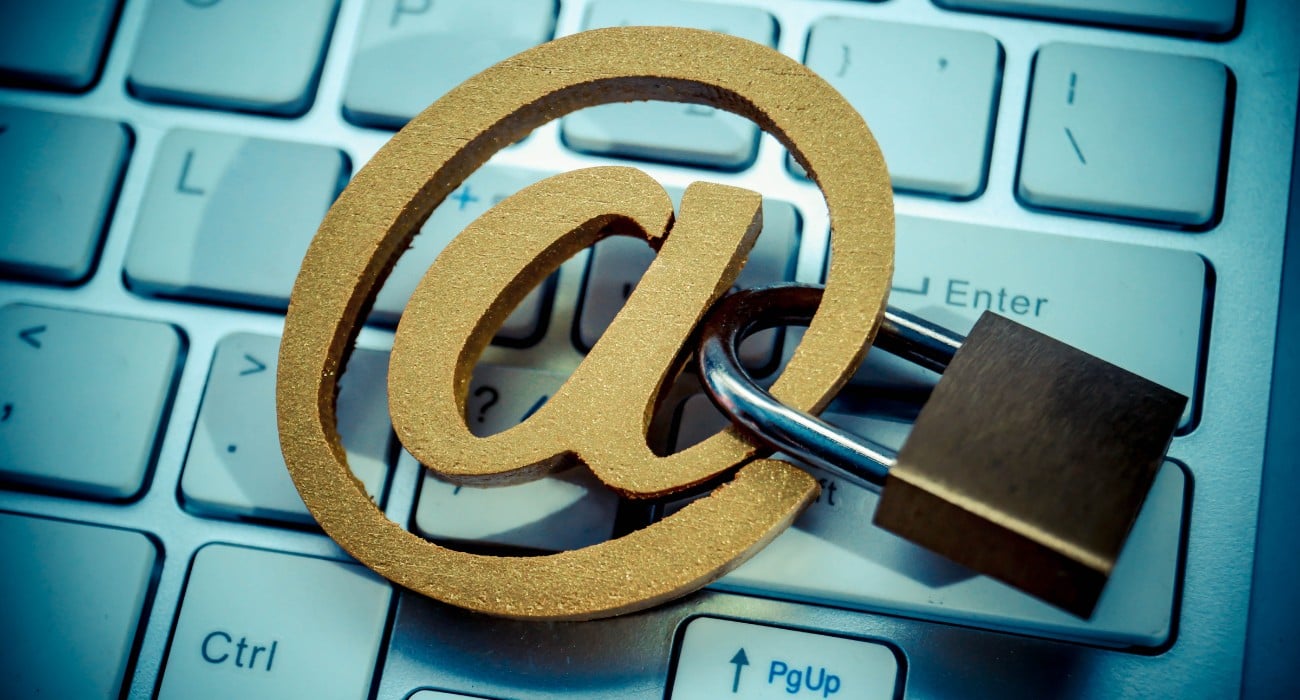
HIPAA guidelines play a vital role in safeguarding sensitive patient data, particularly protected health information (PHI). Although HIPAA doesn't provide specific guidelines for email, it sets forth requirements to ensure the security and confidentiality of PHI when transmitted electronically.
There are ten essential questions that address the encryption, identity verification, data minimization, employee training, access controls, monitoring, policies, patient consent, and secure disposal aspects of HIPAA compliant email practices. By understanding and implementing these practices, healthcare providers can maintain compliance and protect their patients' sensitive information.
1. How does HIPAA apply to email communications?
HIPAA, the Health Insurance Portability and Accountability Act, sets standards to protect the privacy and security of sensitive patient information, known as PHI. Although HIPAA does not provide specific guidelines for email, it enforces requirements for the security and confidentiality of PHI when transmitted electronically, which includes email.
To comply with HIPAA, healthcare providers, and their business associates must implement safeguards to protect PHI and prevent unauthorized access or disclosure when sending or receiving emails containing sensitive patient information.
2. What measures should be taken to encrypt PHI in emails?
Encryption is a crucial component of protecting PHI in emails, as it ensures that unauthorized individuals cannot access the sensitive information. HIPAA's Security Rule requires the implementation of technical safeguards to protect PHI, and encryption is one such safeguard. When sending PHI via email, covered entities and their business associates should:
- Use email encryption, which encrypts the email contents from the sender's device to the recipient's device, ensuring that data remains secure during transmission.
- Choose a HIPAA compliant email service provider that offers encryption features that comply with HIPAA's standards.
- Train staff members on the importance of using encryption when sending PHI and provide guidelines on how to do so securely.
What to look for in a HIPAA compliant email solution:
- Works with your existing email: Some secure email services, like Paubox Email Suite, work on top of Google Workspace and Microsoft products. This avoids disruption to staff and patients and minimizes the risk of human error.
- Portals are second best: While secure portal software is an option, they work by "hiding" the PHI behind a portal which requires passwords and extra steps.
- Minimal training: your HIPAA compliant email solution should be easy to use and require little to no additional steps to encrypt emails.
3. How can recipients' identities be verified for HIPAA compliance?
Verify email recipients' identities to ensure the PHI is only shared with authorized individuals. To comply with HIPAA, healthcare providers, and their business associates should take the following steps to verify recipients' identities:
- Double-check the email addresses of recipients before sending messages containing PHI to ensure they are correct and intended for the authorized person.
- Implement robust authentication methods, such as multi-factor authentication (MFA), to confirm the identity of users accessing email systems containing PHI.
- Establish policies and procedures for staff members to follow when verifying the identity of recipients, particularly when responding to requests for PHI via email.
- Encourage staff to use secure messaging platforms designed for healthcare providers that include built-in recipient verification features to minimize the risk of unauthorized disclosures.
4. What is the "minimum necessary" standard in disclosing PHI via email?
The "minimum necessary" standard is a key principle in HIPAA that requires covered entities and their business associates to limit the amount of PHI disclosed to the least amount needed to accomplish the intended purpose of the communication. When sending PHI via email, the following practices can help ensure compliance with this standard:
- Evaluate the purpose of the email and only include the specific PHI elements necessary to meet that purpose.
- Develop and implement policies and procedures for staff members on how to apply the "minimum necessary" standard when sending emails containing PHI.
- Utilize role-based access control (RBAC) to restrict access to PHI based on job function, ensuring that employees can only access the information necessary to perform their duties.
- Regularly train employees on the importance of adhering to the "minimum necessary" standard and the potential consequences of non-compliance.
5. How should healthcare providers train employees on HIPAA compliant email practices?
HIPAA guidelines require training employees on HIPAA compliant email practices to ensure PHI is handled securely. To effectively train staff members on these practices, healthcare providers should:
- Develop a comprehensive training program that covers the fundamentals of HIPAA, the Privacy and Security Rules, and their application to email communications.
- Include practical guidance on encryption, recipient identity verification, the "minimum necessary" standard, access controls, and secure disposal of PHI in emails.
- Conduct regular training sessions and provide refresher courses to keep employees up-to-date on the latest regulations and best practices.
- Implement a system to track and document employee training to demonstrate compliance with HIPAA's training requirements.
- Foster a culture of privacy and security by encouraging open communication and feedback on email practices, addressing concerns, and providing support for employees to ensure compliance.
6. What access controls are required for HIPAA-compliant email systems?
Access controls are essential to protect PHI in email systems by ensuring that only authorized personnel can access sensitive patient information. To implement appropriate access controls for HIPAA compliance, healthcare providers and their business associates should:
- Assign unique user identification (User IDs) to each employee, which allows for individual tracking and accountability of access to email systems containing PHI.
- Implement role-based access control (RBAC), which grants access to PHI based on job function, ensuring that employees can only access the information necessary to perform their duties.
- Enable automatic logoff features to prevent unauthorized access to email systems when a user leaves their device unattended.
- Regularly review and update access privileges, particularly during employee role changes, terminations, or when new employees join the organization.
- Incorporate strong authentication methods, such as multi-factor authentication (MFA), to confirm the identity of users accessing email systems containing PHI.
Related: EHR Snooping: Tackling unauthorized access and strengthening trust
7. How can organizations monitor and audit email use to ensure HIPAA compliance?
Monitoring and auditing email use helps to identify and prevent unauthorized access or disclosure of PHI in email communications. To effectively monitor and audit email use for HIPAA compliance, healthcare providers and their business associates should:
- Implement email monitoring tools to track and analyze email communications containing PHI, identify potential security risks, and detect unauthorized access or disclosure.
- Conduct regular audits of email systems and user activity logs to ensure that access to PHI is limited to authorized personnel and that policies and procedures are followed.
- Establish a system for reporting and investigating potential HIPAA violations or security incidents related to email use.
- Develop and implement policies and procedures that outline the organization's monitoring and auditing practices. Inform employees of their responsibilities in maintaining email security.
- Periodically review and update monitoring and auditing processes to ensure their effectiveness and stay current with emerging threats and regulation changes.
8. What policies and procedures should be in place for using email in healthcare settings?
Policies and procedures related to email use in healthcare settings are required to maintain compliance with HIPAA. These should be well-documented, easily accessible to employees, and regularly reviewed and updated as needed to ensure continued compliance with HIPAA regulations.
Consider incorporating the following aspects into your organization's email policies and procedures:
- Designate the individuals responsible for creating, reviewing, and updating email policies and procedures. This team should work with various departments, such as IT, legal, and clinical staff, to comprehensively understand the organization's needs and requirements.
- Conduct a risk assessment to identify potential vulnerabilities and threats related to email use and use these insights to inform the development of policies and procedures.
- Incorporate the following aspects into your organization's email policies and procedures: encryption, recipient identity verification, the "minimum necessary" standard, access controls, employee training, monitoring and auditing, reporting and addressing HIPAA violations, and secure disposal of PHI.
- Store policies and procedures in a centralized, secure location, such as an intranet or document management system, where employees can easily access and refer to them.
- Communicate policies and procedures to employees through regular training sessions, email reminders, and internal communications. Encourage employees to ask questions and provide feedback to ensure a thorough understanding of the guidelines.
- Regularly review and update policies and procedures to reflect changes in regulations, technology, or organizational structure. Make sure employees are informed of any updates or changes.
- Monitor compliance with policies and procedures through periodic audits and assessments, addressing any discrepancies or areas for improvement.
9. Why is obtaining patient consent necessary for email communication?
Obtaining patient consent for email communication respects patients' privacy. It ensures that they know the potential risks associated with electronic communication. Although HIPAA does not explicitly require patient consent for email communication, it is a good practice to follow. Consider these points when obtaining patient consent:
- Inform patients of the potential risks associated with email communication, such as possible unauthorized access or disclosure of PHI.
- Explain how your organization protects PHI in email communications, including encryption, access controls, and secure disposal.
- If they prefer not to receive PHI via email, provide patients with alternative communication methods, such as phone calls.
- Document patients' consent for email communication, including any specific preferences or limitations they might have, and store this information securely with their records.
- Regularly review and update patients' consent information to ensure it remains accurate and reflects their current preferences.
10. How should emails containing PHI be securely disposed of?
HIPAA regulations require secure disposal of emails containing PHI to maintain patient privacy and ensure compliance with the Privacy Rule, which mandates proper disposal of PHI when it is no longer needed.
To dispose of emails containing PHI, healthcare providers and their business associates should adhere to the following best practices:
- Establish and implement policies and procedures for the secure disposal of emails containing PHI, outlining the methods and timeframes for disposal.
- Use secure deletion techniques that permanently eliminate data from the storage media, such as cryptographic erasure, which makes the data unreadable by overwriting it with random data.
- Train employees on the significance of secure disposal and provide explicit instructions on how to correctly delete emails containing PH.
- Monitor employee adherence to secure disposal practices through regular audits and assessments.
- Collaborate with third-party email service providers and business associates to ensure they also adopt compliant disposal practices when handling PHI on behalf of your organization.
HIPAA regulations mandate healthcare providers and their business associates take comprehensive measures to protect the privacy and security of PHI when transmitted via email. In summary, adhering to these requirements involves:
- Employing encryption methods and verifying recipient identities.
- Following the "minimum necessary" standard and implementing access controls.
- Training employees on compliant email practices and monitoring email usage.
- Developing and managing robust policies and procedures for email communication.
- Obtaining patient consent for email communications and securely disposing of emails containing PHI.
By understanding and implementing these practices as required by HIPAA, healthcare providers can maintain compliance and protect their patients' sensitive information.
Subscribe to Paubox Weekly
Every Friday we'll bring you the most important news from Paubox. Our aim is to make you smarter, faster.

 Dean Levitt
Dean Levitt



